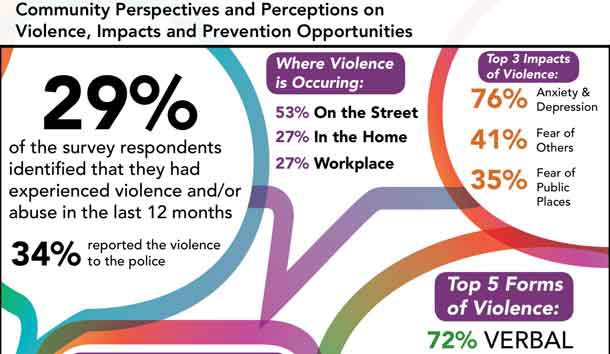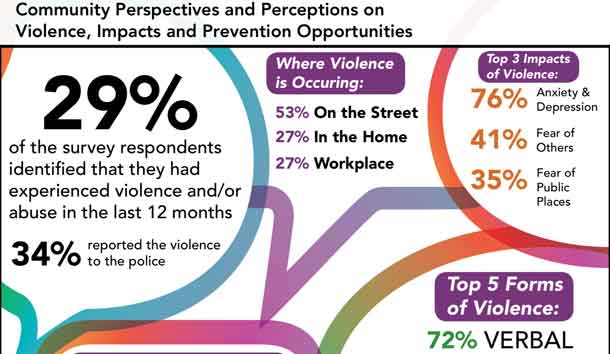
THUNDER BAY – NEWS – Representatives from the Thunder Bay District Health Unit, Thunder Bay Drug Strategy and Crime Prevention Thunder Bay released Community Perspectives and Perceptions on Violence, Impacts, and Prevention Opportunities at City Hall today.
This collaborative report highlights experiences of violence in Thunder Bay and informs next steps for prevention initiatives and interventions to prevent or reduce harm from violence in the community. Extensive feedback was gathered from community members and agencies.
“As public health advocates we strive to address local health issues and recognize violence as a complex and serious issue that influences health for our community, and can impact generations of people,” said Rosemary Scofich, Public Health Nurse, Thunder Bay District Health Unit.
The research was conducted through qualitative interviews with 34 key stakeholders, qualitative focus groups with 47 individuals, and an online survey open to the general public.
“Overall, just over 1200 people participated in the project, providing a glimpse into the community’s perspectives and perceptions on the complexities of violence in Thunder Bay,” said Cynthia Olsen, Coordinator, Thunder Bay Drug Strategy.
Key findings include:
- 29% indicated they had experienced violence and/or abuse in the past year; 34% of these individuals reported it to the police
- The top places where violence is occurring is on the street (53%); in the home (27%); in the workplace (27%); and other (18%), which included specific streets, neighbourhoods, and city transit stops and terminals
- The top five forms of violence reported were verbal (72%); emotional (49%); bullying (44%); physical (36%); and racial (28%)
- Women, Indigenous people, children and youth, people who identify as disabled, and the LGBTQ2S+ community were among those who are experiencing violence
- The most common impacts experienced as a result of the violence were anxiety and depression (76%); fear of others (41%); and fear of public places (35%)
- When asked to identify interventions that would prevent or reduce harm from violence, participants in the survey indicated that addressing problematic substance use through treatment and prevention (63%), reducing poverty (55%), and increasing access to safe and affordable housing (50%) were priority
“There is no single cause that accounts for violence; therefore dedication to multiple levels of prevention is required,” said Lee-Ann Chevrette, Coordinator, Crime Prevention Council. “We recognize that prevention efforts typically take years before measured change can be realized. The Report and suggested recommendations will serve as a base from which we can continue to explore, develop, and implement efforts to prevent and reduce the harms from violence in Thunder Bay”.
For more information, and to read the full report, visit: http://bit.ly/tbayviolencereport







